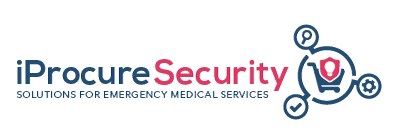483Terms
Help to improve our database
We are continuously collecting common terms used by the Emergency Medical Services practitioners across Europe. Help us improve our content and fill out the online form. If you are not able to find what you are looking for, please let us know by sending us a message through our contact page.
Your feedback is important for us and it will be fed into our Database for the EMS glossary.
Add new EMS termTo unify the communication and knowledge exchange between the emergency medical teams across Europe iProcureSecurity seeks to translate the identified EMS terms in all consortium languages.
That is why the project encourages everyone willing to contribute, to suggest and add missing terminology translation.
Add new translationiProcureSecurity Glossary
Patient monitoring systems measure, record, distribute and display combinations of biometric values such as heart rate, SPO2, blood pressure, temperature and more.
Providing care that is respectful of, and responsive to, individual patient preferences, needs and values, and ensuring that patient values guide all clinical decisions.
An approach to specifying procurement requirements which focuses on the results to be achieved rather than the detailed inputs. For example, instead of specifying that a building needs to have a certain type of insulation or lighting, a performance-based specification could state that it must achieve a minimum energy rating.
Protective clothing, helmets, goggles, or other garments or equipment designed to protect the wearer's body from injury or infection.
A contract which provides for two or more distinct phases and can be terminated without fault at the conclusion of any of those phases. The phases may relate to distinct activities such as R&D, prototyping or the production of a test series or execution of a pilot. The contract may specify the conditions under which the next phase will proceed or this may be left to the discretion of the contracting authority.
Medical doctor.
Medical diagnostic testing performed at the time and place of patient care.
A person actively involved and having experience in a discipline, profession, especially medicine
Portable computing devices (such as a smartphone or tablet computer) and programs which can provide a service to emergency professionals.
is a method for public purchasers to finance the development of innovative solutions. It is an approach to procuring R&D services2, which involve risk-benefit sharing with the suppliers and developers, but does not constitute State aid. The legal basis for PCP in procurement law are the exemptions in Article 16.F of public procurement Directive 2004/18/EC and Article 24.E of public procurement Directive 2004/17/EC.

